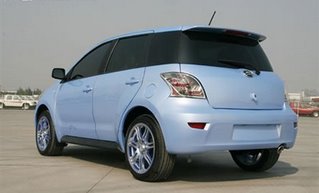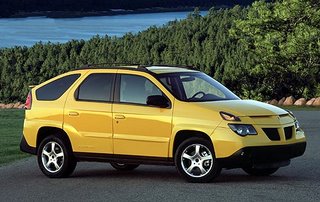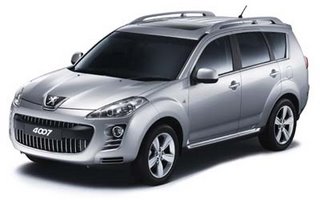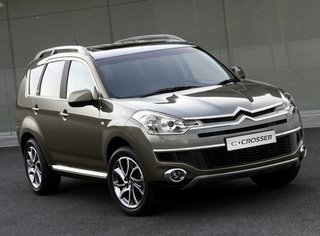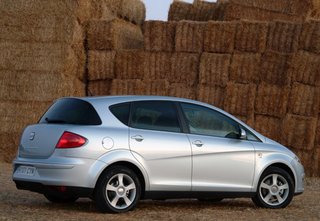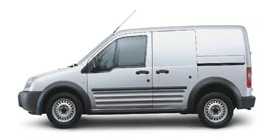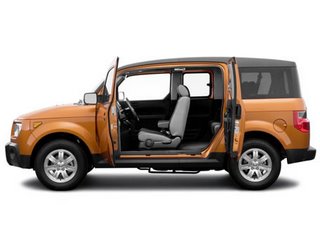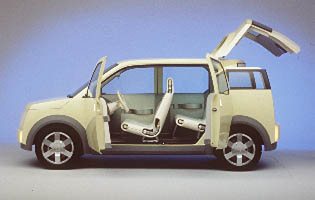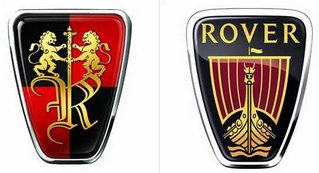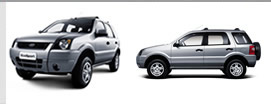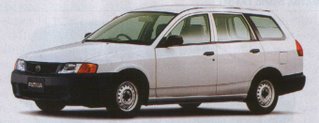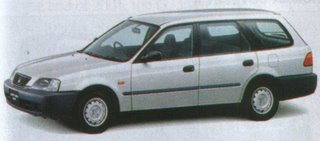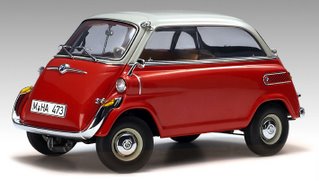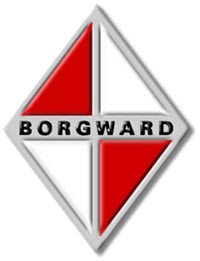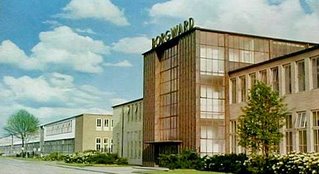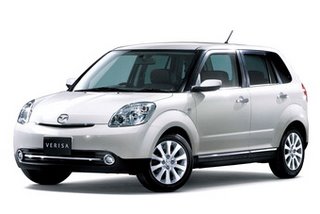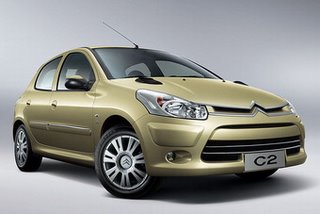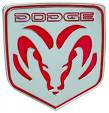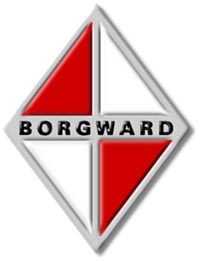You may have noticed that, unlike either Peugeot-Citroen or Ford's Premier Automotive Group, 5ivegears has had some difficulty in upping and moving outwith Coventry's city limits. I feel a Lancia article coming on, but there's some unfinished Warwickshire business still to be done.
It seems an opportune time to consider that perplexing and ill-starred car, the Jaguar X-Type - forever to be known in 5ivegears-speak as "the Mark X Cortina".
Four years have passed since the launch of the X-Type, in a wave of hyperbole which spoke of annual production volumes of 200,000. This car, promoted as the Jaguar for 'Generation X', would, unlike any before, bring Ford's PAG strategy to fruition by 'leveraging' components shared with mainstream Fords into the compact prestige sector. The new product would challenge the Mercedes-Benz C-Class, Audi A4 and the BMW 3-Series, the car credited with establishing the segment, although this orthodoxy will be challenged to this day in Solihull and Canley, or even by a few old men in Bremen and Dingolfing.
Sisters under the skin
As a basis for their new compact car, Jaguar's design team pondered the alternatives of either a shortened S-Type platform, or the CD132 Mondeo underpinnings. The S-Type option was quickly rejected on grounds of cost. The CD132 platform was front wheel drive, but a 4x4 estate had been developed and this provided the inaugural X-type chassis, curiously shortened by two inches by comparison with the Ford original in order to avoid a conflict with the scarcely more spacious S-Type.
The design priority for the 4x4 Mondeo had been traction in demanding terrain and conditions, and it had been criticised from its launch for transmission noise and general lack of refinement. It can be assumed that considerable effort went into endowing the drivetrain with the finesse expected in its upmarket role, as the all wheel drive 2.5 and 3.0 litre petrol V6 X-Types launched in 2002 made a favourable impression for their dynamics, refinement, and performance.
Any European observer of real-world buying trends in the 3-Series class would have recognised the contrivance behind the platform strategy. Around 80% of sales in the sector are near-baseline four-cylinders, and Jaguar would have to reduce specifications ruthlessly to compete in the heartland of this class. Purists feared that a front wheel drive X-Type with a 1.8 Zetec engine and plastic wheel trims was just around the corner.
Ironically, as potential X-Type buyers worldwide stayed away, unconvinced by the extreme mutation of the Jaguar identity, the features incorporated to retain a veneer of affinity with the company's historic ethos were stripped away in pursuit of market share and profit. Front wheel drive came first, with a sub-£20,000 2.1 litre V6 in late 2002, rather sooner than we had expected. Conversely, the four cylinder diesels considered essential to class competitiveness did not appear until early 2004. All had their undoubted merits but were they Jaguars? How could a front wheel drive estate car built in Halewood with a four cylinder Ford diesel ever be?
The unasked question
It's never been asked before as far as I know, but how difficult would it have been to re-engineer the 4x4 Mondeo platform to accommodate a longitudinal engine and rear wheel drive? The propshaft and rear suspension were already in place. Observers of recent car design will recall the Renault 21, which accommodated transverse and longitudinal engines, and also the Escort Cosworth, but there is a much more relevant paradigm in the shape of the 2000 Ford Transit, the X-Type's stablemate and near contemporary, whose engine compartment allows either transverse front wheel drive or longitudinal rear wheel drive configurations to be built as production line options.
So near yet so far...
Geoff Lawson and his styling team produced a shape which touched on brilliance, but were ultimately defeated by the constraints of the Mondeo platform. The work around the rear three-quarters evokes both the original XJ6 and Pininfarina's 1979 Series 3 facelift, but surpasses both. The XK8 inspired tail is a particularly elegant solution to the perennial problem of retaining the tapering Jaguar leitmotiv and incorporating decent luggage space.
Regrettably, forward of the front bulkhead, the CD132 componentry overwhelmed the best intentions of the styling team. The high bonnet line, short nose, and long front overhang precluded anything resembling the signature long bonnet, which had been a distinctive Jaguar feature since the company produced their first cars in Blackpool.
It's only a personal opinion, but the X-Type might have had a better chance with a variant of the Mark II-inspired grille which had played a large part in the S-Type's acceptance and success. The oval grill and inboard headlights have become a 1960s visual icon, enduring long after Mark. II production ended. The most succesful of the recent 'British revival' cars, best exemplified by the Mini have a cartoon quality, rather than stilted deference to the original.
The X-Type's 'XJ in miniature' grille appears needlessly reverential to the company's past although the headlight surrounds, intended to recall the air intakes of the Comet airliner, were a stroke of referential genius.
Rights and wrongs
The parent company's notion that Jaguar's growth in sales and profitability should be won in the 'compact prestige' sector demonstrates scant understanding of the recent history of its competitors:
BMW's present reputation, and indeed the company's survival is founded on the 1962 'Neue Klasse' 1500 and 1800, and the 1966 1602/2002, in each case smaller cars than the current 3-Series.
Audi's VW-backed resurgence effectively began with the 1968 100, and 1972 80. Acceptance of the A6 and A8 in their higher-priced market sectors, (Jaguar's heartland) has been hard-won.
When Mercedes-Benz launched their brilliant 190E in 1982, its pricing made clear that it was a compact Mercedes, not a downmarket one. Mercedes Benz's reputation and brand values are arguably founded on design thoroughness and engineering integrity, rather than a particular driving experience or size class.
Defining the values associated with the Jaguar nameplate is a complicated task, but the XJ-era ethos is one of graceful styling, effortless power, supreme comfort and isolation from the outside world combined with dynamic prowess.
The combination of all of these is well-nigh impossible in a compact vehicle - Jaguar's quintessence is founded on large-car strengths.
Was the negative effect of a move downmarket for Jaguar's brand equity considered? Before the X-type, a Jaguar, unlike its German competitors, was perceived as a singular and idiosyncratic £30,000-plus prestige car, not part of a range with a base entry level set below £20,000.
It is an indication of how far the industry has moved on that a competent and apparently reliable car should miss its sales targets and be branded a failure so soon after its launch. Perhaps the reality is that the buying public actually are sufficiently discerning to recognise that they were being offered a set of existing Ford components in moderately seductive wrapping, rather than a design which in any way embodied true Jaguar values and tradition in a compact package.
Future? What future?
I have a feeling that it may not be long until Ford pull the plug on the X-type venture - there's no sign of commitment to a replacement and no investment in the present four year old design. A few rhetorical questions:
- What has become of the mid-term facelift?
- Where are the four wheel drive diesels, the V6 diesel, or indeed a diesel automatic?
Why is there no Type R hardcore Audi RS4 rival? We have seen the potential of the V6 engine as used in Noble sports cars. Such a variant may not sell in big numbers or save the X-Type single-handed, but the streets of any British business district are full of incontrovertible evidence that the company car user-chooser likes a veneer of RS4 or M3 on his or her four cylinder A4 or 3-Series motorway-pounder.
Where is the high-riding 4x4 estate in the style of the Alfa Romeo Crosswagon Q4? This last idea is mildly abhorrent, but the hardware is all there to produce one within a budget of the sort MG Rover had for product development, and people are buying these things in big numbers.
Doomed?
Ford have lately affirmed their intention to retain Volvo, Jaguar and Land-Rover. In order to assure shareholders that this commitment is not born of inertia and indecision, they will need to demonstrate resolve and ruthlessness, and could well seek a lamb for the slaughter, as did DaimlerChrysler's directors when they axed the Smart Roadster and SmartForFour.
The first indications of healthy demand for the new Freelander, could present the ideal opportunity for Jaguar's masters to cut their losses on the X-Type, shift the under-used X-Type tooling to Chongqing or Chennai, and bury the bad news behind a face-saving Halewood success story.

